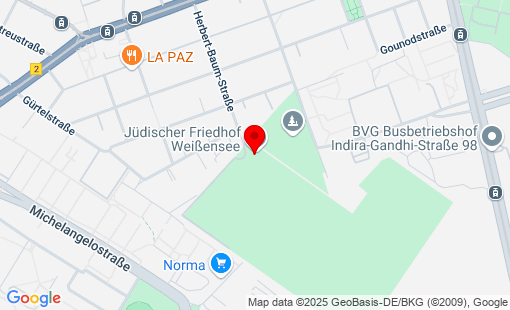Germany
Berlin-Weißensee, Jüdischer Friedhof Berlin-Weißensee
With around 116,000 graves on 42 hectares, the Jewish cemetery in Berlin-Weißensee was and is the impressive Jewish necropolis of the cosmopolitan city of Berlin and the largest preserved Jewish cemetery in Europe in terms of area. The cemetery, which was established in 1880, bears witness to the glory and misery of Berlin's Jewish faith with a large number of important and elaborate gravestones as well as the burial plots for the victims of war and tyranny. On June 27, 1927, a field of honour for the Jewish soldiers who died in the First World War was dedicated in the cemetery. This 90 x 49 m field of honor, surrounded by a limestone wall taller than a man, consists of a rectangular lower parterre and a semi-circular upper parterre, separated by a retaining wall with recessed steps. In the middle of the upper parterre is a 3 m high monument made of shell limestone, which represents a monumental altar. Both parterres are laid out as lawns and the individual graves are marked by uniform, very simple gravestones. In the period between 1933 and 1945, Berlin's previously flourishing Jewish life was almost completely destroyed by the National Socialist policy of racist extermination. The victims of the systematic extermination of Jewish people could only find their final resting place in one of Berlin's Jewish cemeteries if they died in Berlin. Of all the Jews murdered in the concentration camps Ausschwitz, Buchenwald, Dachau, Mauthausen, Ravensbrück and Sachsenhausen, only 809 urns were buried in a specially established urn field. Many of the victims who were denied a dignified burial in the concentration and extermination camps could only be commemorated by carving their names on the gravestones of their families.
